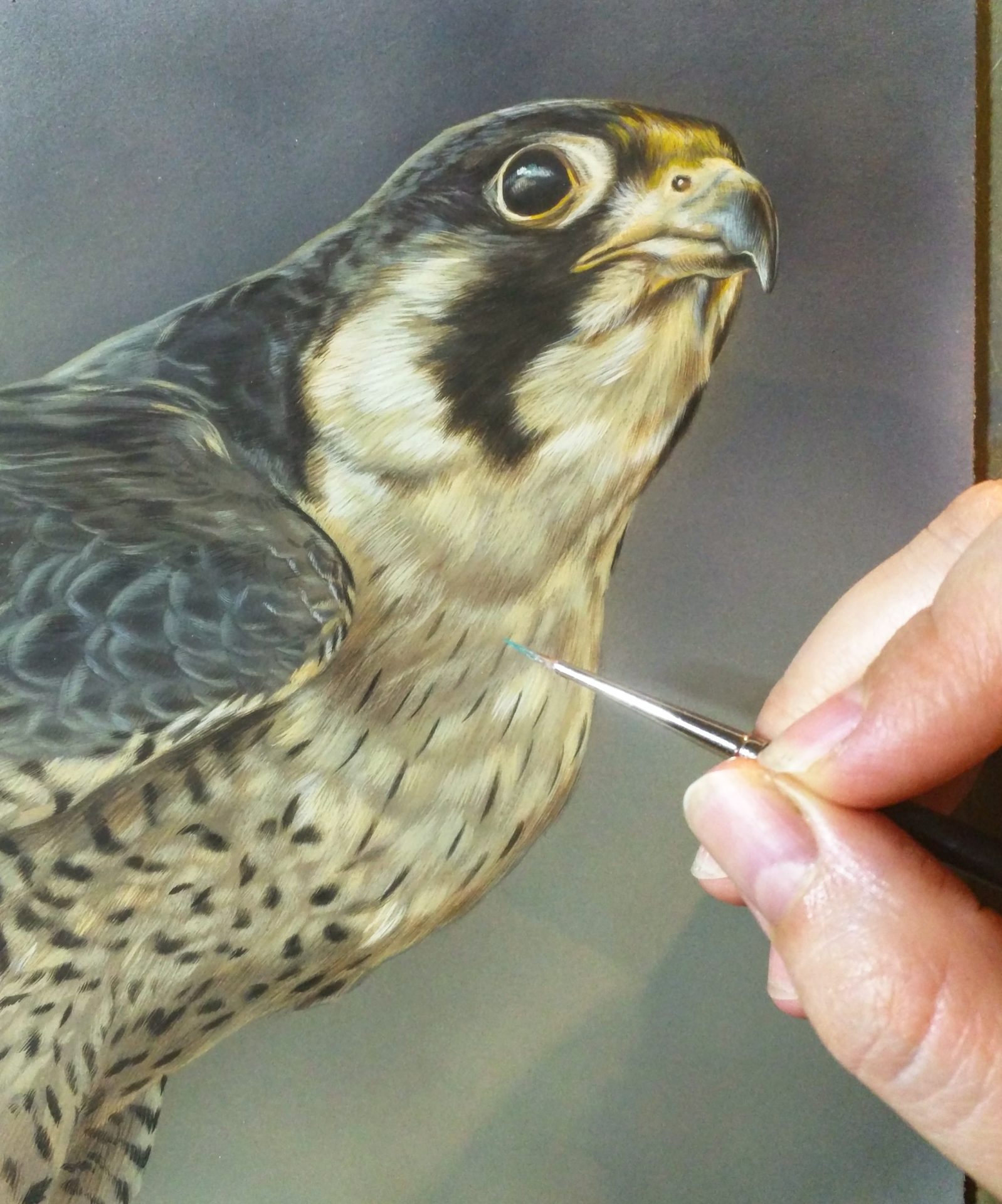Small works may be limited in size, but their presence is anything but. These finely detailed works capture the essence of nature in a way that is both intimate and powerful, offering collectors a unique opportunity to own masterfully crafted pieces that bring the beauty of the wild into their homes.
The Appeal of Small Works Miniatures
Miniature painting is a technique rooted in precision and fine detail, but it is important to clarify that miniature does not mean scaled-down representations. While some have attempted to redefine miniature art as requiring subjects to be painted at a fraction of their actual size, this is a misleading restriction that does not reflect the true history or artistic tradition of miniature painting.
Today, the term miniature painting carries a range of meanings, blending historical tradition with modern interpretations. Originally recognized as a technique emphasizing meticulous detail and refined surfaces, miniature painting evolved under French artistic influence, which introduced the idea of small-scale works as part of its definition. Over time, these meanings have merged, leading to a broader understanding of miniature art.
While many miniature pieces still showcase the precision and controlled craftsmanship of traditional methods, contemporary artists have expanded the approach to include looser, more impressionistic styles, focusing on atmosphere and expressive brushwork rather than intricate realism. As a result, miniature art today is both an homage to its historical roots and a dynamic, evolving practice, encompassing a variety of techniques and interpretations.
For collectors, small works miniatures offer several advantages:
– Space Efficiency – These works fit beautifully into any collection, whether displayed in a gallery setting or a cozy home environment.
– Investment Value – Due to their craftsmanship and rarity, miniature paintings often hold strong value in the art market.
– Personal Connection – The small size encourages an intimate viewing experience, allowing collectors to appreciate the fine details up close.
Variety in Display: Framing and Presentation
One of the joys of collecting miniatures is the versatility in how they can be displayed. Whether framed traditionally or showcased in shadow boxes, these works can be arranged in clusters or standalone presentations to create a striking visual impact.
Collectors have several framing options to enhance their miniature wildlife paintings:
– Large Mouldings – A bold, ornate frame can set off the artwork, creating a dramatic presence that draws the eye and elevates the piece within a larger display.
– Thin Framing – A delicate, understated frame allows the artwork to shine without overpowering it, making it ideal for collectors who wish to display multiple miniatures in a limited space.
– Shadow Boxes and Cabinet Displays – These options provide depth and protection while allowing lighting to enhance the fine brushwork and textures.
Smaller arrangements also make excellent additions to themed collections, complementing larger wildlife paintings or serving as focal points in curated spaces. Their ability to blend seamlessly into various settings makes them a favorite among collectors who appreciate both fine art and interior design.
Enhancing a Collection with Size Variety
Adding small wildlife paintings to a collection brings depth and variety, offering a contrast to larger works while maintaining a cohesive theme. These pieces can serve as conversation starters, drawing attention to the artistry involved in capturing nature on such a small scale.
For those new to collecting, smaller pieces provide an accessible entry point into the world of fine art, allowing enthusiasts to acquire museum-quality works without requiring extensive wall space. Whether displayed in a personal study, a gallery wall, or a dedicated art room, miniature wildlife paintings bring a sense of wonder and appreciation for the natural world.
Small works in wildlife art is more than just small-sized painting—it is a celebration of craftsmanship, nature, and the collector’s passion for fine art. Whether you are an experienced collector or just beginning your journey, these works offer a timeless and meaningful way to connect with the beauty of wildlife.
You can also explore Rebecca’s insights into miniature painting and its history (https://lathamstudios.com/rebecca/what-is-miniature-painting/).
Additionally, Rebecca has shared a glimpse into her small works spectrum (https://rebeccalatham.com/2024/07/the-miniature-spectrum-from-tiny-treasures-to-detailed-delights/).
